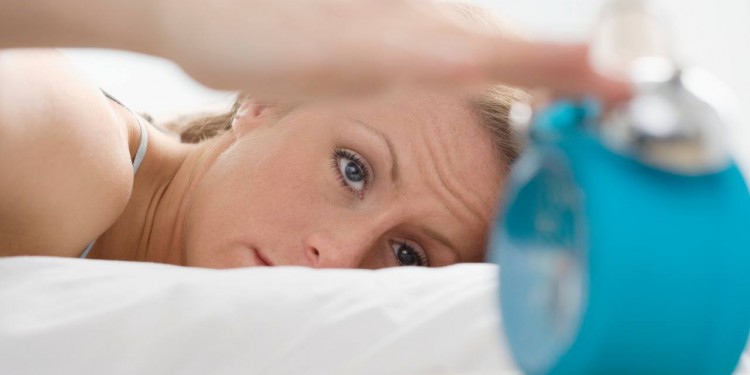There are so many connections between sleep and exercise! Performance is intricately tied with our circadian rhythms in many ways. Whether you are getting enough, the position you choose, or even what you eat before you get your z’s can impact exercise results. As a partner, exercise can help alleviate stress, anxiety, and depression, challenges that interfere with sleep. By exercising, many aspects of sleep are improved, including falling asleep more quickly and staying in a deep sleep longer. Give your body the time it needs to sleep for health, performance, and happiness. Here we’ll share some of the more fitting information on sleep and exercise.
Sleep is a huge component of the NASM Wellness Coach Course!
The Overhead Squat Assessment and Sleeping Position
Do your clients compensate with an inward movement of the knees when performing an overhead squat assessment? This is a possible indicator of an underactive gluteus medius and gluteus maximus (1).
Ask your client if they are a side sleeper (and if it’s always on the same side if only one knee moves inward). This sleep position typically allows the hip to medially rotate and adduct, further lengthening the external rotators and abductors (glutes) and shortening the internal rotators and adductors of the hip (1,2).
This habitual posture could be delaying your client from obtaining the results expected from a corrective exercise program. Encourage your client to adjust their sleep position by placing a pillow or bolster between their knees to alleviate the rotation and adduction (2). Granted, it’s tough to maintain the same position through the night!
Want to improve post-exercise recovery? Try a serving of protein before you crawl into bed.
Not only does your body need sleep to recover from resistance training, but a bit of pre-bedtime protein can stimulate muscle protein synthesis (3). A slow protein, such as casein, dairy, meat, or nuts, will stay in the stomach longer, providing a sustained release of amino acids into the blood and to the muscles through the night (3).
Right after, and even before your workout, a fast protein such as whey can blunt the amino acid attacking effects of cortisol on the muscle tissue, instead pulling from the amino acids circulating in the blood.
See also: How to Sleep Properly
Sleep Apnea and Lifestyle
Sleep apnea is a disorder where there are pauses or shallow breaths while you sleep (4). These pauses can last for a few seconds or drag on for minutes (4). This disorder disrupts the sleep cycle, not only for the person who has it, but for bed partners as well due to the snorting or choking sounds that are made when breathing starts again (4). This is also the reason the partner is usually the one to point out the disorder! Obstructive sleep apnea, the most common type of this disorder, has been associated with excess weight, in addition to high blood pressure, metabolic syndrome, diabetes, and cardiovascular diseases (4-6). A change in lifestyle that focuses on weight loss and maintenance interventions such as diet and physical activity has been shown to halt, and sometimes reverse, mild obstructive sleep apnea for some obese patients (5,6).
Sleep for Weight Loss?
When you don’t get a good seven to eight hours of sleep, chances are you’ll be a bit irritable and more likely to increase your calorie intake (7,8). (Consider the long term results of these extra calories on the patient with sleep apnea and their partner!)
This increase in appetite stems from a shift in two of the body’s key appetite regulatory hormones, leptin and ghrelin (8). Leptin suppresses appetite and ghrelin stimulates it. Without enough sleep, leptin levels decrease and ghrelin rises, leading to an increase in appetite (8). The added fatigue from lack of sleep may also lead you to skipping out on exercising, another set back for reaching weight loss goals.
References
- NASM Essentials of Personal Fitness Training (6th ed.). Burlington, MA: Jones & Barlett Learning. 2018
- Sahrmann SA. Diagnosis and Treatment of Movement Impairment Syndromes. St. Louis, MO: Mosby, Inc. 2002.
- Res PT, Groen B, Pennings B, Beelen M, Wallis GA, Gusen AP, Senden JMG, & van Loon LJC. (2012). Protein ingestion before sleep improves postexercise overnight recovery. Medicine and Science in Sports and Exercise Aug;44(8)1560-69.
- What Is Sleep Apnea? National Institute of Health: National Heart, Lung, and Blood Institute. 10 July 2012. Accessed 11 Mar. 2014. http://www.nhlbi.nih.gov/health/health-topics/topics/sleepapnea/
- Toumilehto H, Seppa J, Uusitupa M, Peltonen M, Martikainen T, Sahlman J, ...Gylling H. (2014). The impact of weight reduction in the prevention of the progression of obstructive sleep apnea: an explanatory analysis of a 5-year observational follow-up trial. Sleep Medicine; 15 (3) 329-335.
- Kline CE; Crowley EP; Ewing GB; Burch JB; Blair SN; Durstine JL; Davis JM; Youngstedt SD. (2011). The effect of exercise training on obstructive sleep apnea and sleep quality: a randomized controlled trial. Sleep; 34(12)1631-1640.
- St. Onge M, McReynolds A, Trivedi AB, Roberts AL, Sy M, Hirsch J. (2012). Sleep restriction leads to increased activation of brain regions sensitive to food stimuli. American Journal of Clinical Nutrition; 95(4)818-824.
- Taheri S, Lin L, Austin D, Young T, Mignot E. (2004). Short sleep duration is associated with reduced leptin, elevated ghrelin, and increased body mass index. PLoS Med 1(3): e62. doi:10.1371/journal.pmed.0010062











